How Tod’s CEO Diego Della Valle Is Fighting to Preserve Italy’s Most Important Landmarks

“When I was very young at school, we made the tour to see Rome. And I remember, very well, the Colosseum was, ‘Wow,’ ” says Diego Della Valle, sitting in his office, which is also pretty wow—larger than a tennis court, illuminated by natural light, and filled with contemporary art—in the sprawling factory complex in Le Marche, Italy’s central heartland, that is home to his company, Tod’s. “It was super big. And it is one of the things from life that is big when you are little but remains big when you are big.”
Tod’s, too, is big—one of the most significant fashion brands in Europe—producing refined, Italian-made shoes, bags, and clothing for men and women. The Tod’s Group, which includes shoe and accessories manufacturer Roger Vivier, lifestyle brand Hogan, and apparel label Fay, posted first-half results of almost $623 million, of which Tod’s represented over $311 million, both up over 21 percent year over year. The Tod’s Group exceeded $1.1 billion in revenue in 2022—around 10 percent more than pre-pandemic levels.
More from Robb Report
De Bethune's Bonkers New Blue Titanium Watch Looks Like Something Out of 'Star Trek'
Ferrari and Bang & Olufsen Teamed up on New Headphones and Speakers in the Marque's Signature Red
New Balance Claims Golden Goose Copied Its 990 Sneaker in a New Lawsuit

The factory, designed by Della Valle’s third and current wife, architect Barbara Pistilli, and built with gleaming Italian travertine marble, is also vast: nearly 1 million square feet, with almost 16 acres of gardens. It’s so large that Della Valle’s father, Dorino, used a bicycle to get around. (After Dorino died in 2012, the bike was installed in the lobby as a kind of tribute, surrounded by contemporary art.) When construction began about 25 years ago, the campus was one of the first such facilities in the country to provide an elevated environment in which employees could both work and play: There’s a large day care and preschool with a gym, a restaurant, and an auditorium for exhibitions and lectures—all free for employees. Art is everywhere, including a site-specific staircase by Ron Arad called Wave and a Ferrari F33 Formula 1 car driven by Michael Schumacher in the 1997 league championship, which was gifted to Della Valle by his friend Luca Cordero di Montezemolo, who was then chairman of Ferrari.
“People here, including me, work in a very nice place,” says the softly spoken Della Valle, 69, in his good but charmingly imperfect English.
“It is a healthy life, surrounded by greenery. Outside is like a university, no? Inside, people work like 100 years ago,” he says of the artisans still making their wares by hand. “That is the big difference between us, plus three or four others, and many others which are more marketing companies.”
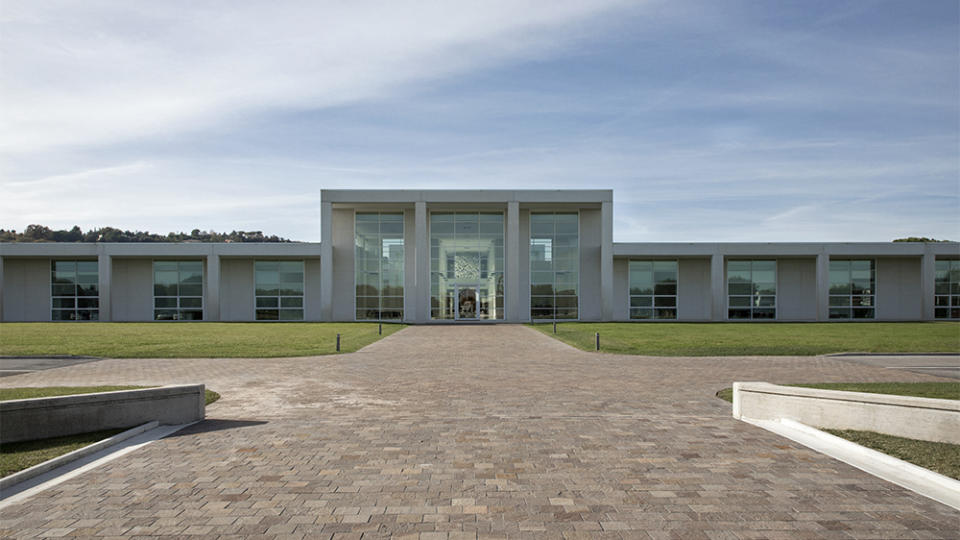
He continues, “The company is very [particular] about the quality [of life]. We do many things to support our employees, to support the territory around here. And to support the country, like restoring the Colosseum or La Scala and many other things. We have a big responsibility to make a profit, of course—if there’s no profit, the boss has to leave. But our social responsibility is very strong. I’m very proud when I do something for the others. And I love to do something that helps not only me and my family, but everybody.”
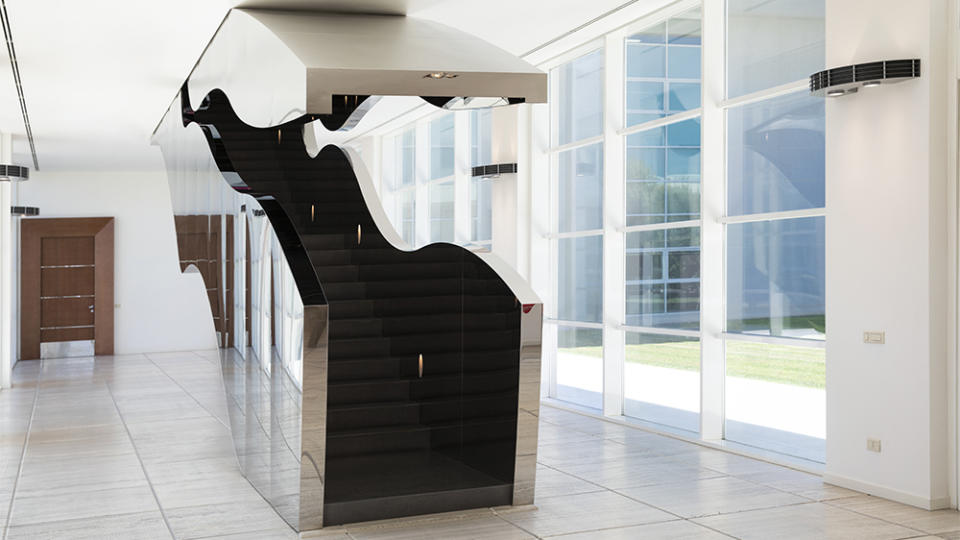
Indeed, Della Valle (or DDV, as he’s affectionately known) pledged roughly $28 million to the restoration of the Colosseum back in 2011, spread over four phases. The first two—cleaning every inch of the 2,000-year-old facade with high-pressure purified steam and refurbishing the hypogea, the series of tunnels and rooms underneath the arena where gladiators and animals were prepared—are already complete. The third, moving the service center outside of the main Colosseum building, is about to begin; the fourth, addressing the lighting, will follow. Tod’s has been a permanent member of the Teatro alla Scala Foundation since 2011 and helped cover the cost of the storied Milanese opera house’s productions for an entire year. DDV has also built schools and funded community projects in Casette d’Ete, close to Fermo, the region where the factory is located and where he and his younger brother, Andrea (vice chairman of the Tod’s Group, who will be 58 this month), grew up and still maintain residences. DDV also has properties in Capri, Milan, New York, Miami, and Paris, as well as a yacht, a 52-foot vessel once owned by President John F. Kennedy, a helicopter, and a collection of Ferraris. His personal wealth is estimated at $1.6 billion.

“It’s very important to explain to the young people that if you are super rich, if you win in the market, but you don’t give back nothing for others, you are nothing,” he says. Which is why, he says, he uses his influence on his friends, to encourage those in positions of power to step up, too. “It’s not important if you are first or second or third,” he says, sounding a little like a philanthropic Yoda. “It’s important to do.”

Tony Ripani, Tod’s leather master, has a trick, and you can tell it’s one he has performed many times before. He takes his water bottle and pours a few drops onto a soft suede Gommino loafer, named for the 133 distinctive rubber pebbles, or gommini, in the sole. It’s the company’s signature, the style most synonymous with Tod’s. The liquid beads and rolls around the top of the shoe without penetrating the leather. He then dabs his finger into the puddle, rubbing some into the material before flinging the rest onto the floor. A dark stain blots the suede. The point of this theater is to show the quality of Tod’s water-resistant treatment—in a few minutes the mark has disappeared and the shoe is pristine. Not exactly magic, but a testament to an obsession with both excellence and utility. Luxury here must have a purpose.
Ripani has worked for the company for 44 years and now, at 76, is struggling to retire. As he often comes into the factory with Della Valle on Saturdays to inspect the leather in peace, he’s been persuaded to take two afternoons off during the week. But it’s a challenge: He likes his work. His wife likes him at work. So he’s in no hurry to go anywhere. Not while there’s so much to learn, he says, even after four and a half decades.
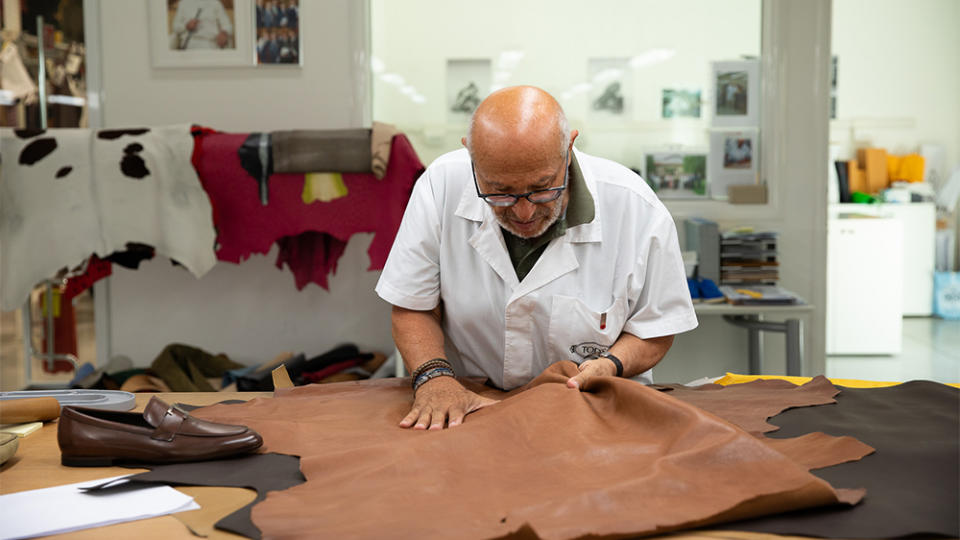
Every member of staff at any of the 422 Tod’s retail outlets worldwide knows Tony. As part of their training, they all make the pilgrimage to Le Marche to watch the master at work. And while they’re here, they sample the Italian way of life: the food, the weather, and the style (what’s known internally at Tod’s as the “Italian orientation”). You can’t sell a leather product, the thinking here goes, without understanding how it functions, how the material works. And you can’t sell an Italian leather product without understanding the lifestyle. Because to buy a Tod’s Gommino or bag is, even subconsciously, to buy into a little slice of the Italian life. It’s something that DDV holds dear. In fact, his life has been built around it.
Della Valle’s grandfather, Filippo, made shoes by hand in the family home in the early 1920s. DDV’s father, Dorino, took the baton and built a small factory, manufacturing for retailers such as Saks Fifth Avenue and Bergdorf Goodman. Diego joined the family firm in 1975 and, a few years later, came up with an idea for a moccasin-based driving shoe that married the comfort and ease of American clothing, which he’d witnessed on trips to the U.S., with Italian élan.
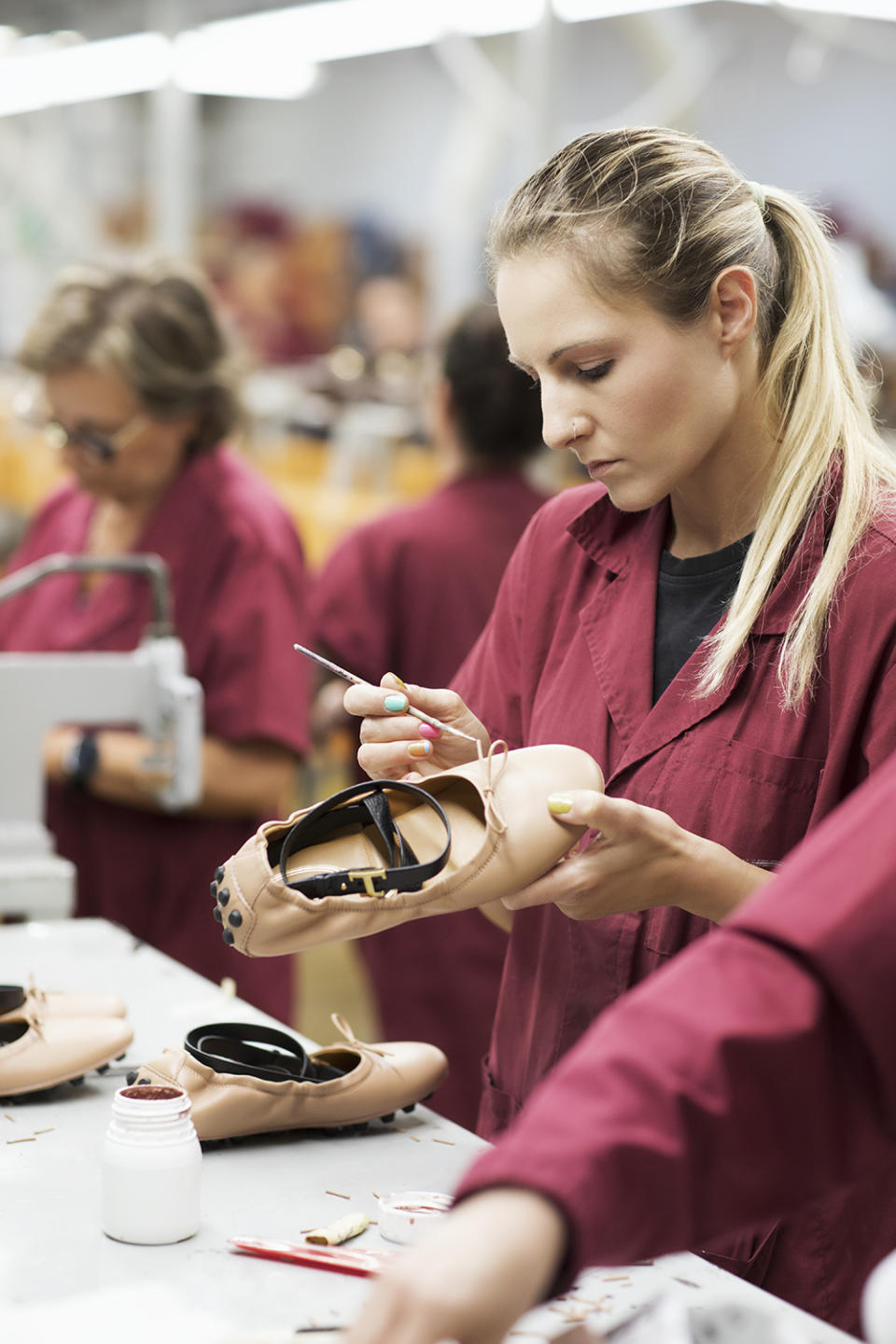
Gomminos have been worn by Hollywood stars and cultural (not to mention actual) royalty for the past four decades, from Gianni Agnelli (who was gifted a pair early on by DDV in a marketing masterstroke that led to a spike in sales) to Denzel Washington, Alexander Skarsgård, and British Prime Minister Rishi Sunak, and remain the mainstay of the footwear collection for men and women. I ask Della Valle to explain their lasting appeal. Many brands have products they weave stories around, he says. An iconic product is the real story.
“My Gommino is an icon,” he says. “The Hermès Birkin is an icon. The Submariner Rolex, icon. The Aviator Ray-Ban, icon. Different price: The Aviator is 200 euros, and the Rolex is 10,000 euros. But it is an icon because the product is very strong, the company is very old, and there are many stories to tell about this product. Think how many people use the Ray-Ban Aviator. How many movies you see the people with the Rolex watch? Icons—they are the product of the dream.”
And here he shares an insight into why Tod’s has not just endured, but thrived, in a market where brands can burn white-hot and then disappear in the span of a few years.
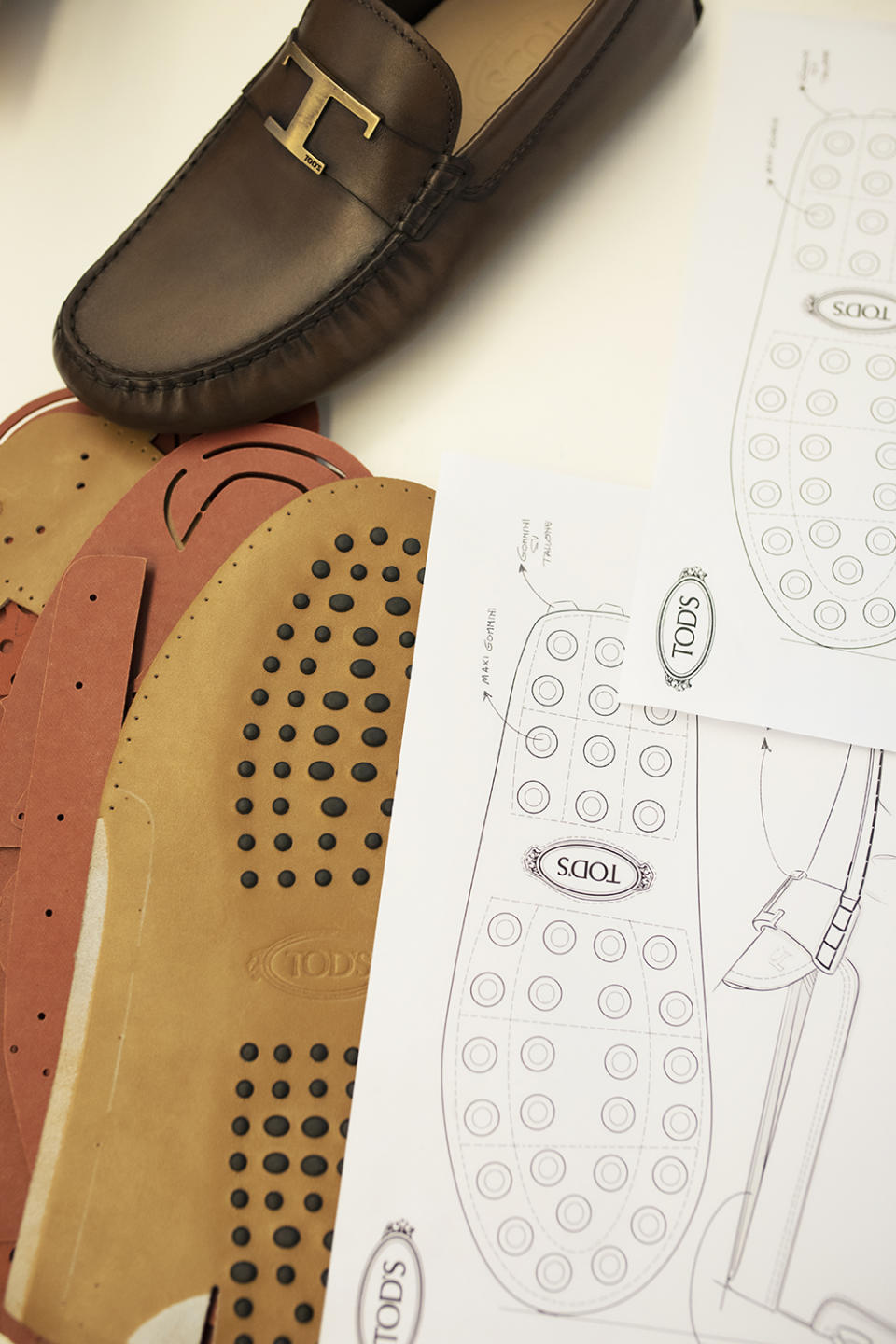
“Now the people ask too much about limited edition, too much collaboration. The dilution is coming, no?” he says, chuckling. “In many stores, now they don’t sell you nothing.” He says this lack of inventory is something customers, particularly affluent ones, are infuriated by. “I think the future is for the icon product. Icon is sometimes a super simple thing. Because the people now want to have one product for a long time, for it to be useful but high-quality. The icon is the thing you don’t take out of the shop window.”
As an aside, it has been reported that the name Tod’s was chosen in 1984 by DDV after searching through a phone book for something suitable. Now he says that he picked it because it’s short, simple, and recognizable and can be pronounced around the world. The original title was J. P. Tod’s, but the initials were dropped in 1997. Curiously, though, they’re set to make a comeback: In a few months, DDV reveals, he will bring back “a small production that we call J. P. Tod’s that will be the super, most expensive part of the collection.” The Gommino will be made with the finest Tod’s materials. An icon within an icon?
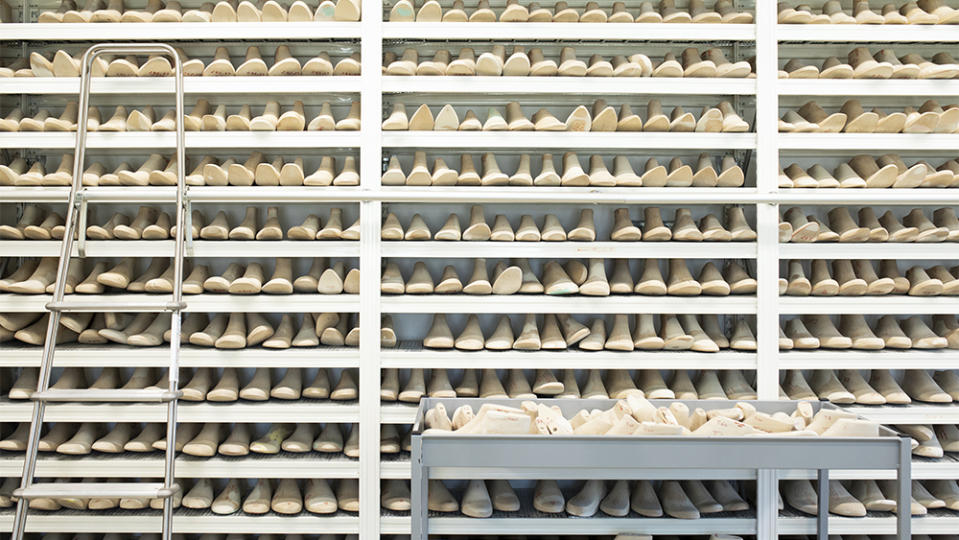
The process of making the Gommino begins with the leather and, therefore, with Tony. There is an entire prototype department where new ideas are conceived and designs reworked, and nothing gets put into production without being run past the team, who establish whether one can, among other things, actually run in it. There are machines that put shoes through their paces, dutifully replicating thousands of steps. Others challenge the stress points of various materials; there’s even one to determine whether a fabric will damage clothing when rubbing against it. If doubts remain about comfort, the prototype is tested the old-fashioned way: walking around the factory with a new shoe on one foot, an old one on the other for comparison.
If tweaks are needed, the design goes back to the last maker—not the most recent artisan to touch the product, but the craftsman who makes the last, the wooden mold that the shoe is built upon—who whittles away with a rasp and file in a bright room with photos of his motorcycle on the notice board behind him. As well as shaving off millimeters, he can add size by using a resin he layers on specific areas, to stretch the leather and stop the shoe rubbing on a toe, for example. The prototype is adjusted until the shoe-last department is happy; it is then replicated in plastic to be reproduced by those on the production line. There the process remains largely unaltered from techniques established decades ago. While leathers can now be cut by machine or laser as well as by hand, most of the construction is done by someone in a coverall brandishing a tool.
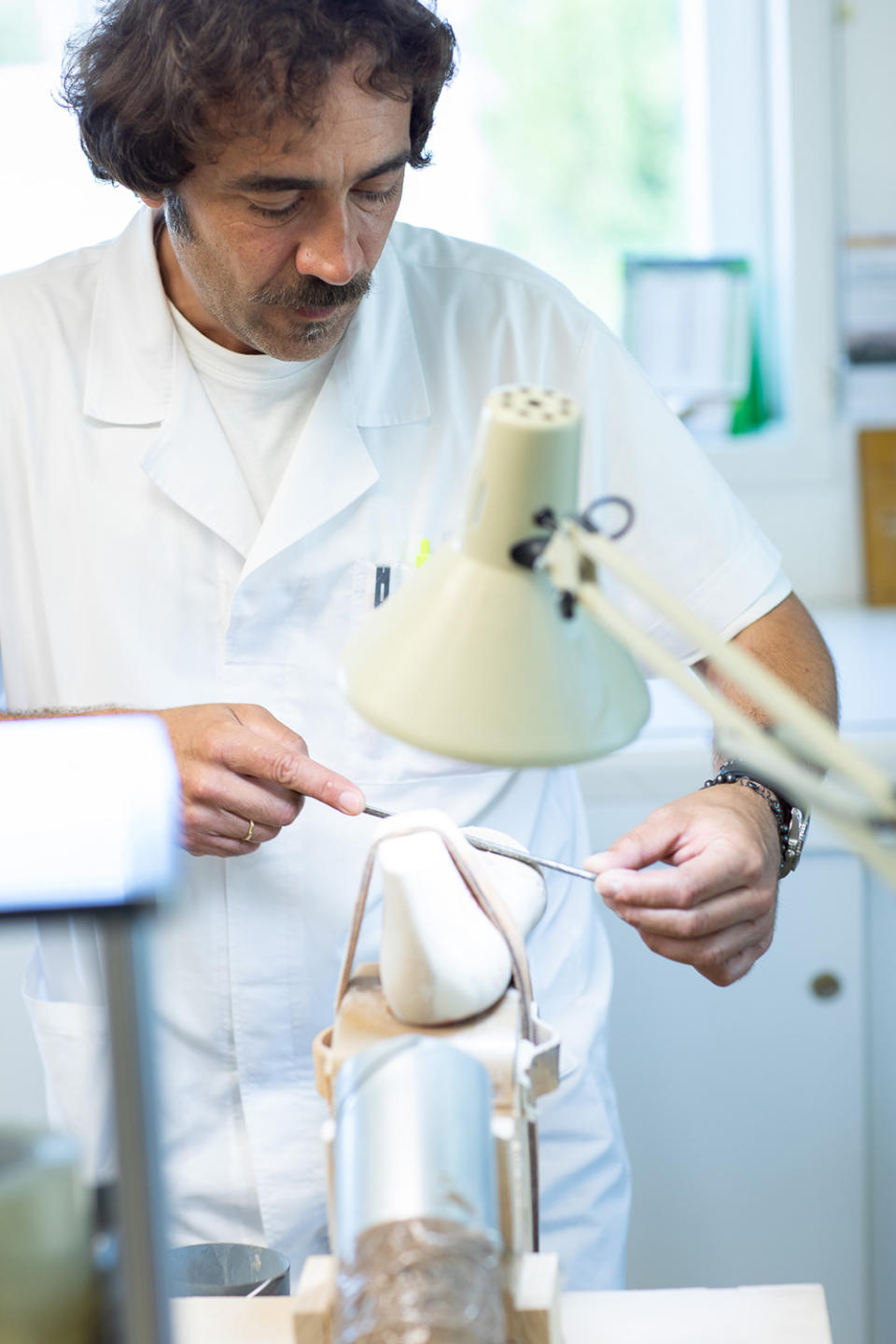
Back at the leather works, 37,000 square feet of humidity-controlled space are devoted to a warehouse that holds all the skins, which can be stored for more than 50 years with no loss of quality. But who will be working these raw materials in the next half-century, or even the next decade? These days, the shoes could be made by robot, though “the quality is not the same,” DDV says. A steady stream of craftspeople is required to maintain the business, but young people are moving out of this area in search of work they consider more profitable or prestigious. “Now in Italy the old people say the young are leaving the villages, and the villages are closing,” he says. “Nobody helps the old people. There are many social problems.” Which is why, some years ago, Della Valle started the Bottega dei Mestieri, wherein young interns are placed with established masters for a minimum of six months of paid vacation training in numerous aspects of the business. “It is a project to support young employees without experience and the old people very close to retirement,” says Della Valle. “In this case, the young give the energy to the old, and the old give the experience to the young. It’s a good mix, a link between two different ages. They make lunch together.” After the trial period, about 80 percent of the interns decide to stay on; roughly 300 staff have been hired in this way.
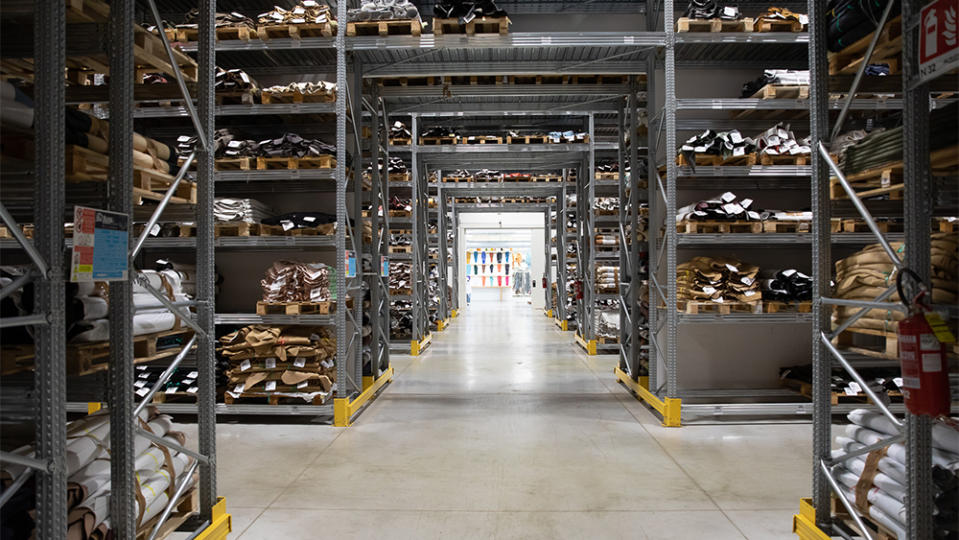
DDV is convinced Italy’s youth can be persuaded that working with their hands—creating things—is a noble and lucrative profession. It’s all part of the “Made in Italy” brand that is so important to the luxury industry of the country, and to Della Valle personally: The faith that, with centuries of heritage in arts and crafts, from architecture to manufacture, Italian artisanal excellence is not just sacrosanct but almost divinely ordained. It’s not a marketing play; it’s a belief system.
But just how easy is it to convince 20-somethings that they shouldn’t aspire to Wall Street or Silicon Valley but should work in a factory instead? Francesco is 27 and has been at Tod’s for six years. He started as a leather cutter, and his precision impressed Tony, who wanted him on his team but had no open position. Della Valle hired him anyway.
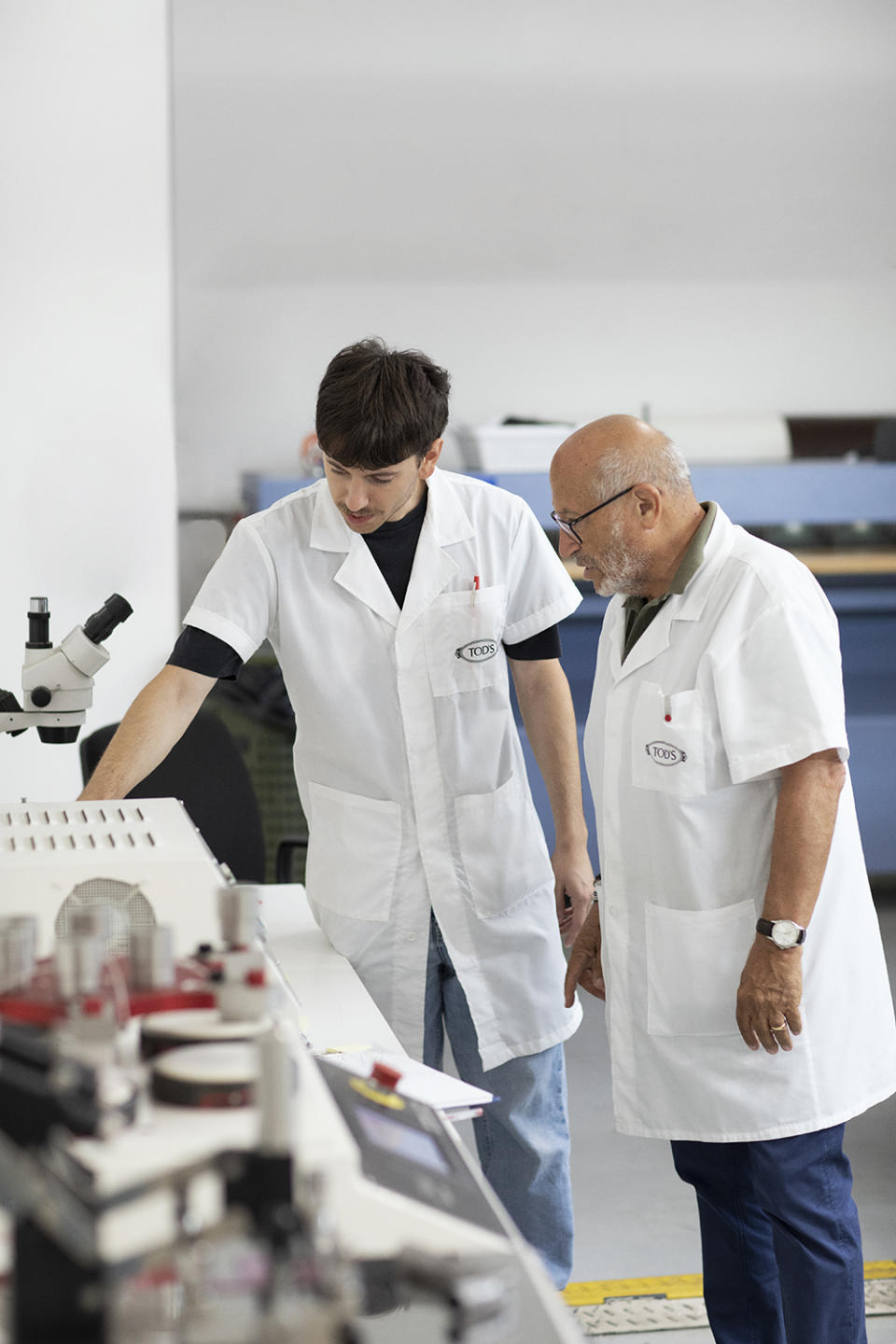
So why did he want to do this work? “I like the feeling of improving, of working with experts, and I’ve always been fascinated by fashion and luxury. I wanted to see how the products were made,” Francesco says. He grew up in the area and studied mechanics at college.
“Tod’s is very trustworthy—everyone knows it. And I like the traditional, artisan techniques, such as hand-stitching, so getting to learn from the people who have been doing it for a long time is exciting.”
His friends are curious. They know the brand, and the shoes, and are always asking how they’re made. Increasingly among Gen Z and millennials, artisanship is becoming sexy. “ ‘Made in Italy’ is a real thing,” says Della Valle, back in his office. “At the same time, it’s a very simple thing. It’s a high-quality life. In Italy, the sense of [the] artisan is very strong because the people were born with a big culture [of this]. And it’s not normal in many other countries… Being an artisan is very independent, and very cool.” Silicon Valley’s loss is Italy’s—and our—gain.
Best of Robb Report
Sign up for Robb Report's Newsletter. For the latest news, follow us on Facebook, Twitter, and Instagram.

